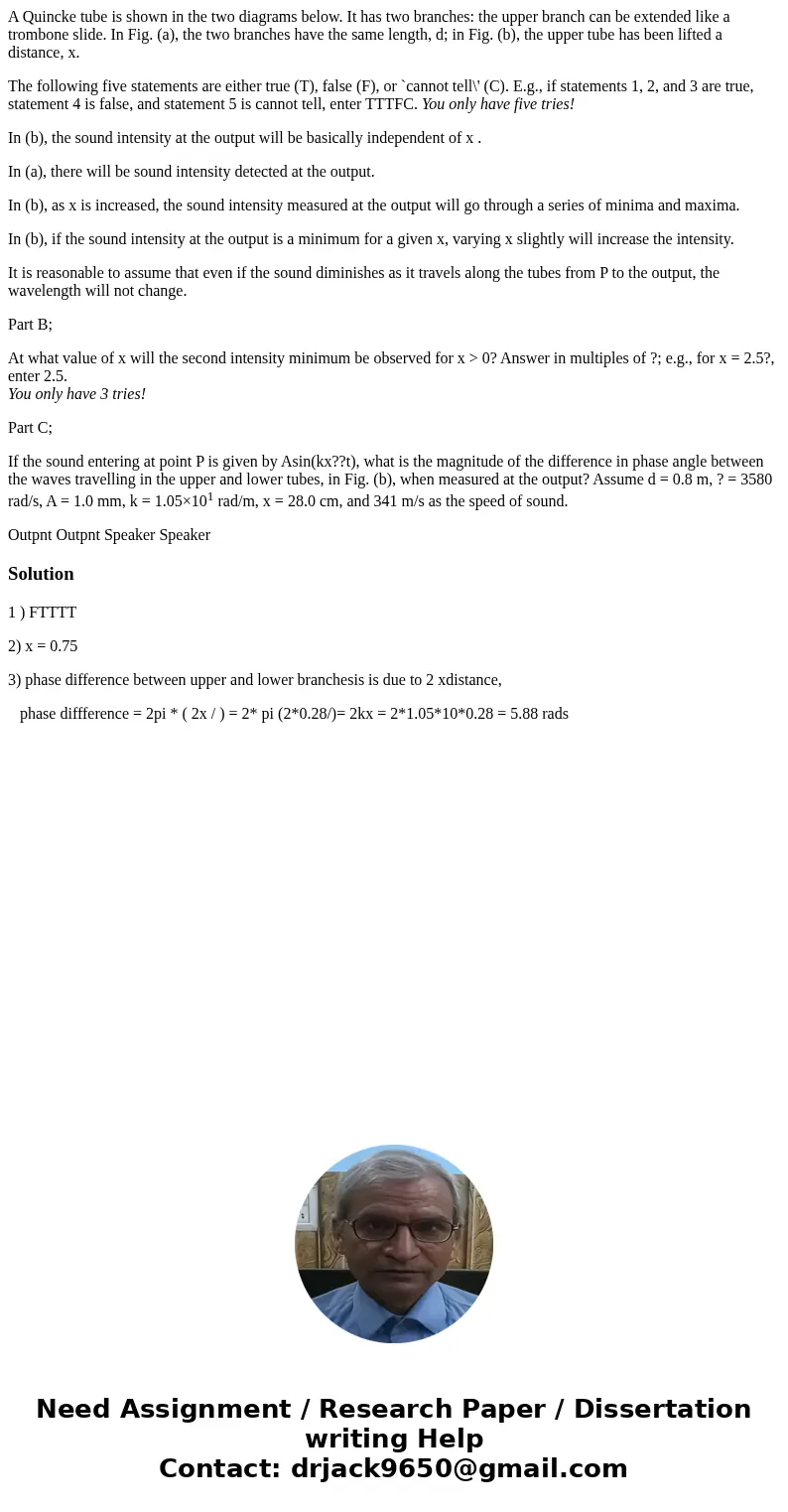A Quincke tube is shown in the two diagrams below It has two
A Quincke tube is shown in the two diagrams below. It has two branches: the upper branch can be extended like a trombone slide. In Fig. (a), the two branches have the same length, d; in Fig. (b), the upper tube has been lifted a distance, x.
The following five statements are either true (T), false (F), or `cannot tell\' (C). E.g., if statements 1, 2, and 3 are true, statement 4 is false, and statement 5 is cannot tell, enter TTTFC. You only have five tries!
In (b), the sound intensity at the output will be basically independent of x .
In (a), there will be sound intensity detected at the output.
In (b), as x is increased, the sound intensity measured at the output will go through a series of minima and maxima.
In (b), if the sound intensity at the output is a minimum for a given x, varying x slightly will increase the intensity.
It is reasonable to assume that even if the sound diminishes as it travels along the tubes from P to the output, the wavelength will not change.
Part B;
At what value of x will the second intensity minimum be observed for x > 0? Answer in multiples of ?; e.g., for x = 2.5?, enter 2.5.
You only have 3 tries!
Part C;
If the sound entering at point P is given by Asin(kx??t), what is the magnitude of the difference in phase angle between the waves travelling in the upper and lower tubes, in Fig. (b), when measured at the output? Assume d = 0.8 m, ? = 3580 rad/s, A = 1.0 mm, k = 1.05×101 rad/m, x = 28.0 cm, and 341 m/s as the speed of sound.
Outpnt Outpnt Speaker SpeakerSolution
1 ) FTTTT
2) x = 0.75
3) phase difference between upper and lower branchesis is due to 2 xdistance,
phase diffference = 2pi * ( 2x / ) = 2* pi (2*0.28/)= 2kx = 2*1.05*10*0.28 = 5.88 rads

 Homework Sourse
Homework Sourse